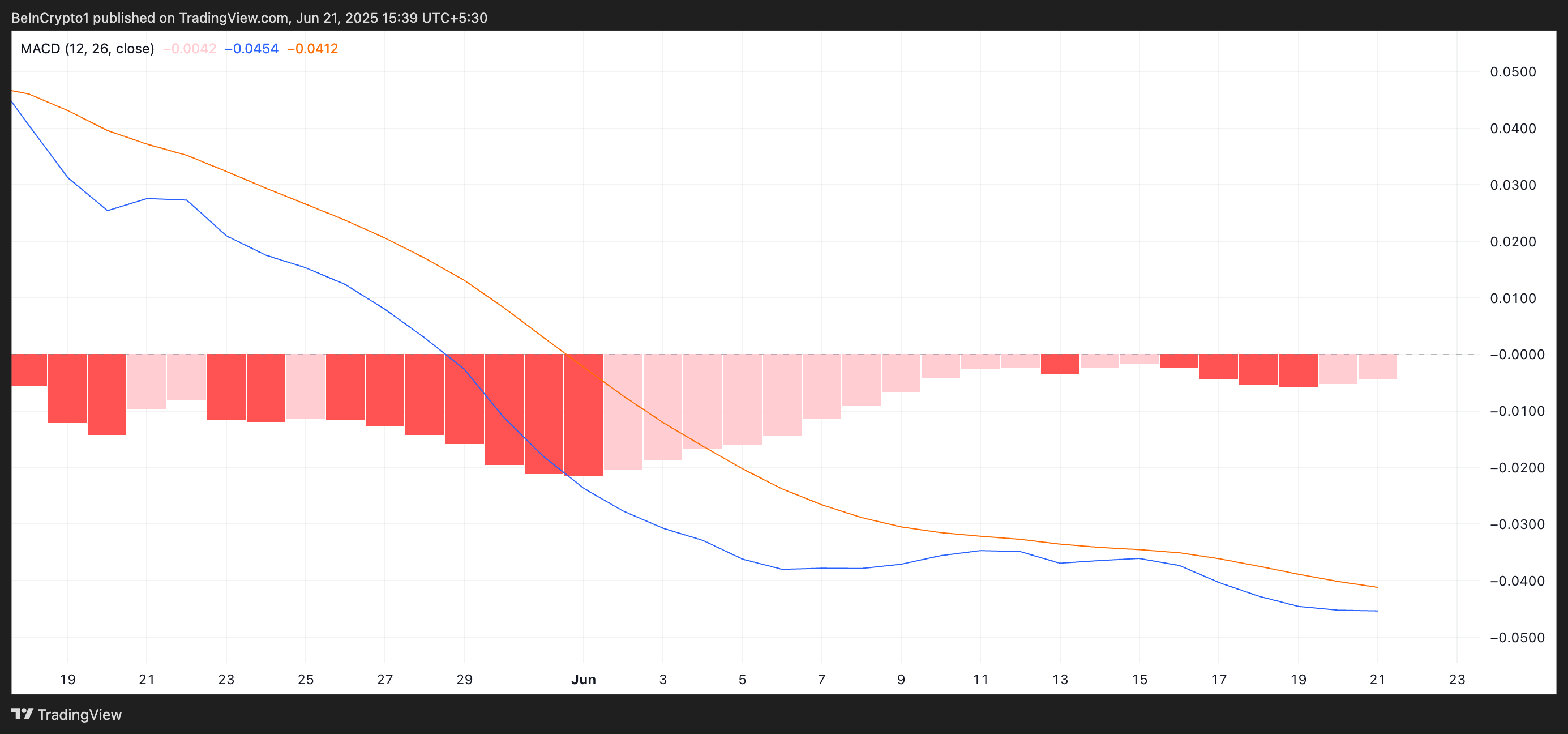Pi Network Plummets 15% in a Week – Is This the Bottom or Just the Beginning?
Pi Network's nosedive continues as it sheds another 15% this week—leaving investors scrambling for answers.
What's driving the sell-off?
No sugarcoating here: Pi's bleeding out while 'hodlers' cling to hopium. The mobile-mined token faces mounting skepticism as its closed mainnet drags on—meanwhile, traders are voting with their wallets.
Can Pi reverse course?
History says altcoins either bounce hard or fade into obscurity. With zero utility and maximalist bagholders, Pi's playing a dangerous game. Remember: in crypto, 'community-driven' often means 'no institutional interest.'
Sellers Dominate as PI Falls Below Key Thresholds
Since reaching an all-time high of $3 on February 25, Pi has recorded consistent weekly losses, with no significant demand inflows to halt the slide.
On the daily chart, the readings from the token’s Moving Average Convergence Divergence (MACD) indicator reflect the deepening bearish momentum. At press time, PI’s MACD line (blue) rests below the signal line (orange).

The MACD indicator identifies trends and momentum in its price movement. It helps traders spot potential buy or sell signals through crossovers between the MACD and signal lines.
As with PI, when the MACD line rests below the signal line, it indicates waning buying activity. Traders see this setup as a sell signal. Hence, it could exacerbate the downward pressure on PI’s price.
Moreover, PI’s negative Balance of Power (BoP) shows that sellers remain firmly in control. As of this writing, the indicator is at -0.12.

The BoP indicator measures the strength of buyers versus sellers in the market, helping to identify momentum shifts. When its value is positive, buyers dominate the market over sellers and drive newer price gains.
Conversely, negative BoP readings signal that sellers are dominating the market, with little to no resistance from buyers. This points to sustained downward pressure and weakening investor confidence.
For PI, the negative BoP readings reinforce the bearish outlook. It suggests that selling momentum may persist unless new demand emerges.
Pi Network Struggles Below Key EMA Level
Currently, PI trades at $0.53, exchanging hands below its 20-day exponential moving average (EMA), which forms dynamic resistance above its price at $0.56.
The 20-day EMA measures an asset’s average price over the past 20 trading days, giving more weight to recent prices. When an asset’s price trades below its 20-day EMA, it signals short-term bearish momentum and potential continued downside. If the bears retain control, they could drive PI’s price to revisit its all-time low at $0.40.

However, a rebound could push the Pi Network’s token above the 20-day EMA and toward $0.79.

